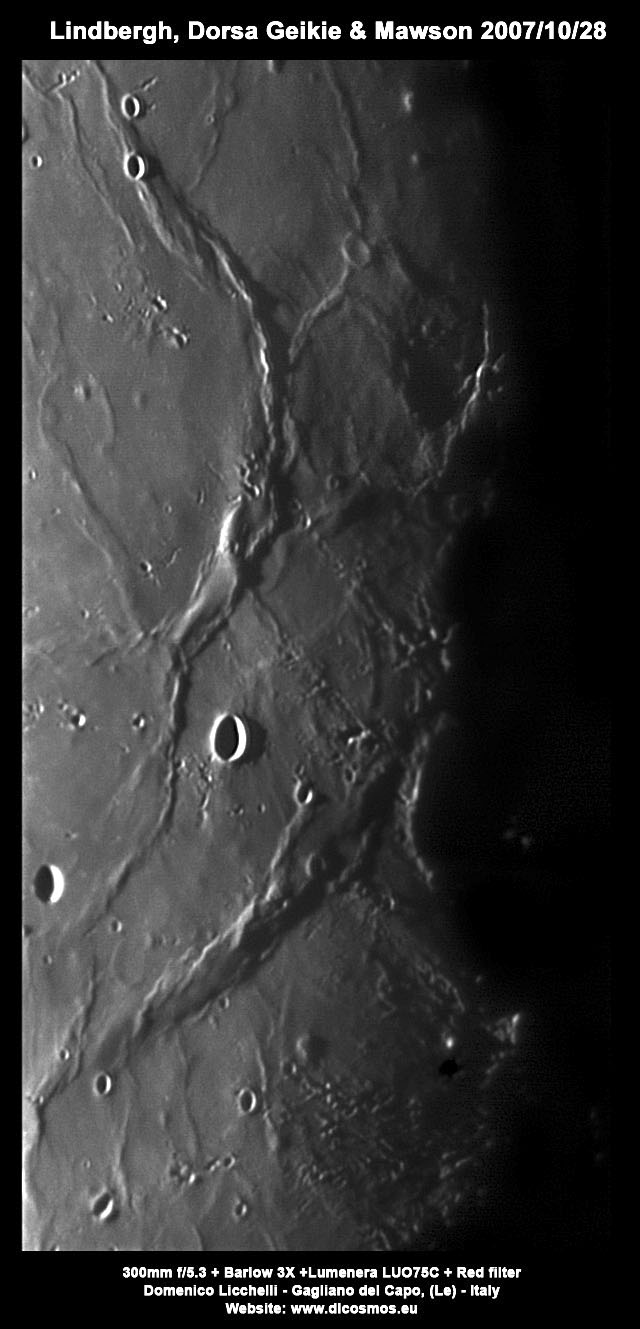
image by Domenico Licchelli,Gagliano del Capo, Italy
An interplay of mare ridges and secondary crater chains dominate this piece of the Moon. The secondaries are easy to explain - they come from Langrenus, which is off the image to the bottom right. The secondary craters align along the rays that are visible at higher Sun angles. The ridges are somewhat more mysterious. The main ones - Mawson below and Geikie above - mark an inner ring of the ill-defined Fecunditatis Basin. But the smaller ridges, between the two named ones and the right edge of the image probably result from forces that are too hidden for us to reconstruct. We assume that the ghost craters - like the one on a small ridge at upper right, and the horseshoe-shaped one at upper left - are standard impact craters that have been buried by mare lavas, but they could be due to some other unanticipated process. And notice the rimless crater - Ibn Battuta - near the lower left margin. This appears to be a normal impact crater that has been surrounded by mare lava that rose just up to its rim crest. But the Lunar Orbiter IV image shows it to be a shallow, flat-floored crater rather than a conical pit. The 12 km crater Lindbergh near the middle of the image has a similar interior, but a raised rim that casts a massive shadow at this low Sun view. The raised rim makes Lindbergh seem likely to be of impact origin, so how do we determine if Ibn Battuta’s lack of a rim makes it a freak or really a lucky crater with surrounding lava that stopped just before burying it? I don’t know, but it doesn’t look like burial would have turned it into a ghost crater.
Technical Details:
Oct 28, 2007. Orion Optics 300mm f/5.3 Newtonian telescope + barlow 3X + Red Filter + Lumenera LUO75C.
Yesterday's LPOD: Little Hills, Huge Hole
Tomorrow's LPOD: Moving Eastward
COMMENTS?
Register, Log in, and join in the comments.



